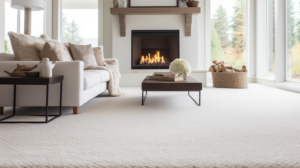Wallpaper is a great way to add color and pattern to your home. Wallpaper installation requires measuring the space, cutting the paper to size, hanging it on the wall without any bubbles or wrinkles, then smoothing down all of those edges with a roller so they don’t peel up later. It’s not something that most people have done before – which means some tricks will help make this project easier for beginners.
1) Measure and Mark the Wall
First of all, you need to determine whether your wallpaper is a standard roll (57 inches wide) or an extra-wide roll (108 inches wide). Standard rolls are usually about 10ft long. You can make them work for longer stretches by piecing together the pattern in the middle of the wall. Be sure to follow the guidelines in your instructions for seam placement.
If you have an extra-wide roll, you’ll need at least two boxes but probably three to cover 20ft without repeating or pulling up seams in between rolls. You may also need more space on the ceiling since 108inches is 4 1/2 feet taller than 57 inches. Measure out from one corner, measurements with masking tape until you have the entire length and height of your wall taped off.
2) Cut the Paper to Size
Wallpaper can be cut with a utility knife or scissors. If you’re using a standard roll, you’ll want to cut it in half so that it’s about 28 1/2 inches wide. If you’re using an extra-wide roll, you’ll want to cut it into thirds so that each strip is about 36 inches wide.
3) Paste the Wallpaper
There are two types of paste: wet and dry. The wet paste needs to be mixed with water before use, while dry paste comes ready to use. Follow the instructions on your wallpaper paste for the correct measurements – generally speaking, you’ll need about 1/4 cup of paste for every standard roll of wallpaper or 1/2 cup for every extra-wide roll.
Before you start pasting, test the paste on a piece of scrap paper to make sure it’s the right consistency. It should be thick enough to coat the back of the paper but not so thick that it’s dripping off.
If you’re using a wet paste, mix it with water until it has a toothpaste-like consistency. Apply the paste to the wall with a brush, making sure to get into all of the corners and seams. Then, attach the wallpaper to the wall and press down firmly with your hands. Use a clean cloth to wipe away any excess paste.
4) Smooth Down the Paper
Use a wallpaper smoother to press down edges and remove any air bubbles. Start at the top of the wall and smooth in one direction, working your way all across the surface. Then turn around and start from the bottom, smoothing upwards.
When you reach an edge or corner, lift enough so that it doesn’t peel when you pass over it with the roller. Work slowly so that you can be sure not to miss any spots – otherwise, wrinkles will form in your work and you’ll have to restart from scratch.
5) Roll on a Clear Coat
Once all seams are sealed and all bubbles are gone, roll on a thin layer of clear paste glue or sealant. You can also use low-tack painter’s tape to seal the seams, but it’s harder to remove. Let the paste dry before hanging anything on the wall.
Wallpapering might seem like a daunting project, but learning how to wallpaper is pretty easy. With these basics in your toolbox, you can tackle any room in your home.



